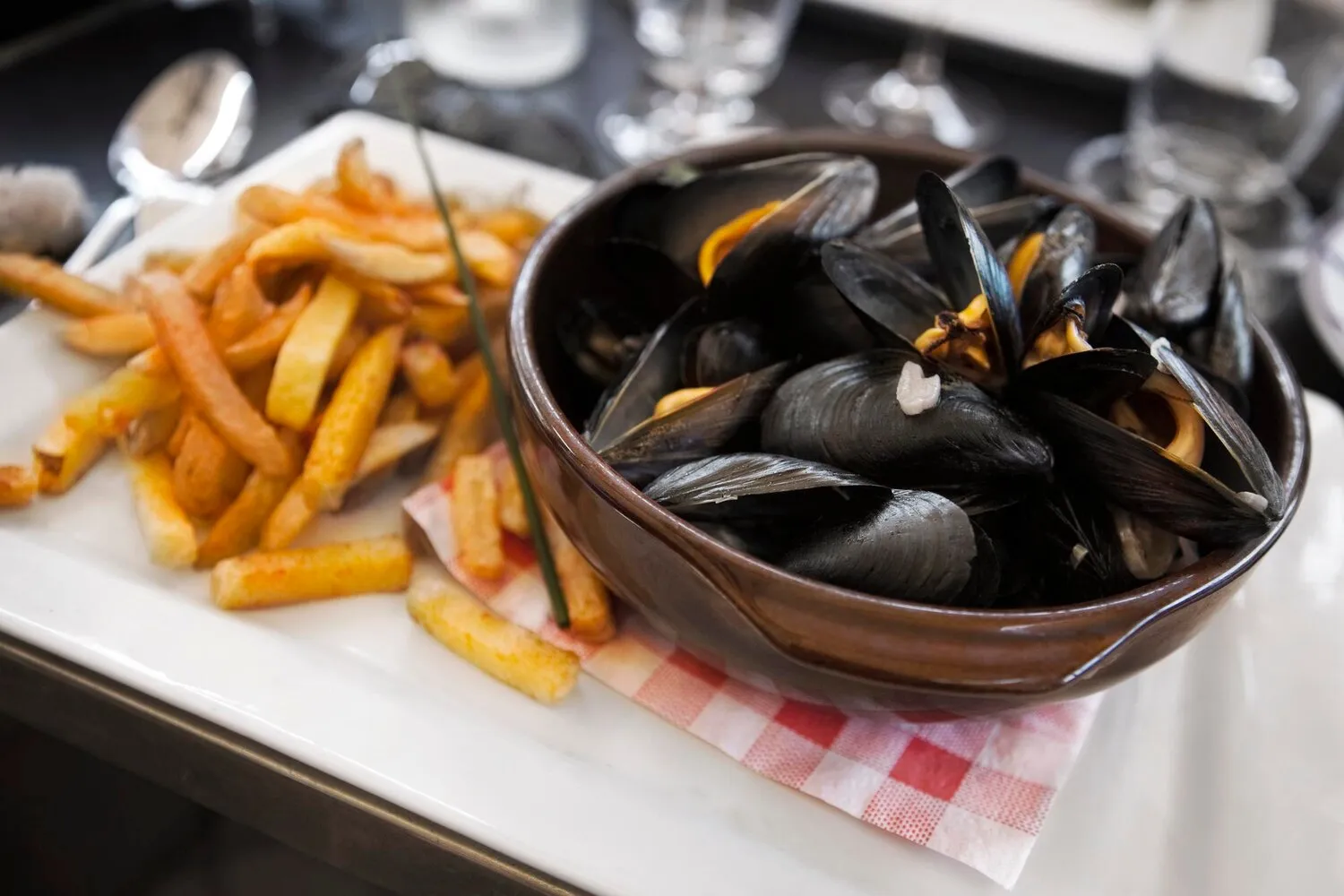
Frietjes (Fries)
M's Friet is known for its Belgian-style fries.
Nutrition Facts
* The % Daily Value (DV) tells you how much a nutrient in a serving of food contributes to a daily diet. 2,000 calories a day is used for general nutrition advice.
The exact origins are debated, with both Belgium and France claiming invention. However, the popular narrative suggests Belgian villagers, accustomed to frying small fish, turned to potatoes when the river froze in winter, thus inadvertently creating 'frites'. They gained international prominence during World War I when American soldiers stationed in Belgium tasted them, mistook the Belgian language for French, and dubbed them 'French fries'.
Frietjes are more than just a snack in Belgium; they are deeply embedded in the national identity and culinary culture.
Friteries
Dedicated 'friteries' (fry shops) are ubiquitous throughout Belgium, acting as social hubs and offering a wide array of sauces and toppings. These are not just fast-food outlets but are often family-run businesses with closely guarded recipes and techniques.
Street Food Staple
Frietjes are a quintessential street food, often enjoyed in a paper cone or cardboard tray. They are commonly consumed as a standalone snack, a side dish with mussels (moules-frites), or as part of a 'mitraillette' sandwich (filled with meat, fries, and sauce).
National Pride
The quality of frietjes is a point of national pride, with Belgians taking their fries very seriously. Disputes over the best friterie or the proper frying technique are common and passionate.
Frietjes are characterized by a simple, yet satisfying, flavor profile derived primarily from the potato itself and the quality of oil used for frying.
The dominant flavor is that of the potato, ideally a variety with a high starch content for a fluffy interior. The frying process imparts a subtly nutty and savory flavor, influenced by the type of oil (often beef fat or vegetable oil). The outside should be crispy and lightly salty. The traditional Belgian preference is for thicker-cut fries, allowing for a larger surface area for crispiness and a soft, potato-rich center. Sauces served alongside, such as mayonnaise, andalouse, or samurai sauce, contribute to the overall flavor experience.
Double Frying
The key to authentic Belgian frietjes is double frying. The first frying (blanching) at a lower temperature cooks the potato through, while the second frying at a higher temperature creates the crispy exterior.
Potato Selection
Choose a starchy potato variety, such as Bintje (traditionally), Russet, or Maris Piper. These potatoes have a lower moisture content, which helps them crisp up better.
Oil Quality
Use a high-quality frying oil with a high smoke point. Traditionally, beef fat was used, but vegetable oil is a common and acceptable alternative. Ensure the oil is clean and fresh.
Cutting Consistency
Cut the potatoes into uniform sizes to ensure even cooking. Belgian fries are typically thicker than American fries.
Don't overcrowd the fryer
Fry in smaller batches so that the oil temperature doesn't drop too much, this will ensure optimal crispiness and avoid soggy fries.
Explore additional Belgian dishes and restaurants
Explore BelgianDiscover top dining spots and culinary experiences in Nazareth.
Explore NazarethLearn more about the food culture, restaurant scene, and culinary heritage of Belgium.
Explore Belgium